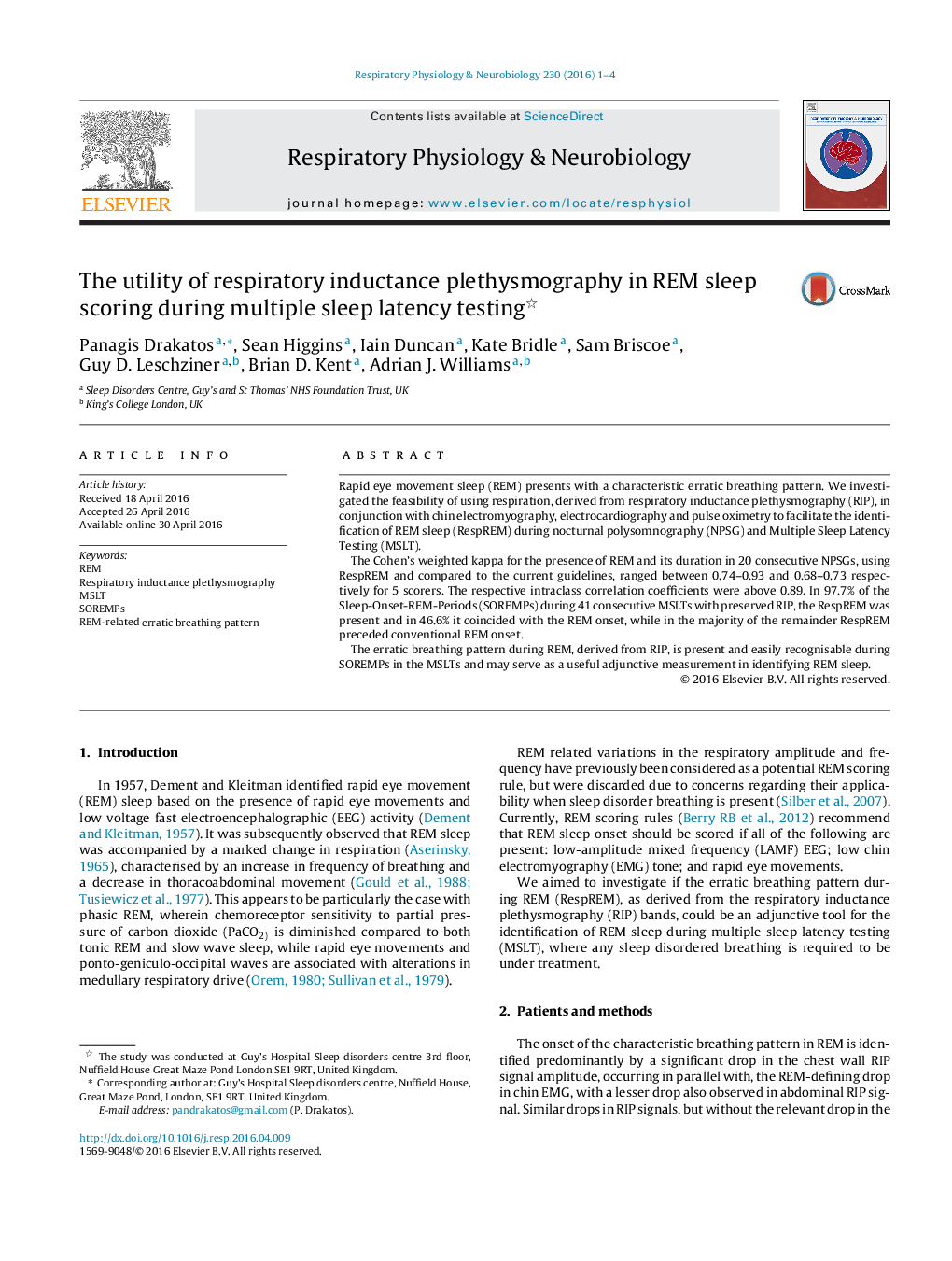| Article ID | Journal | Published Year | Pages | File Type |
|---|---|---|---|---|
| 2846644 | Respiratory Physiology & Neurobiology | 2016 | 4 Pages |
•The REM-related breathing pattern may aid the identification of SOREMPs during MSLTs.•This could be achieved through use of RIP signals during MSLTs.•The REM-related breathing pattern may precede REM onset in N1-REM transitions.•The respiratory-related rule for REM may be used for qualitative purposes in NPSGs.
Rapid eye movement sleep (REM) presents with a characteristic erratic breathing pattern. We investigated the feasibility of using respiration, derived from respiratory inductance plethysmography (RIP), in conjunction with chin electromyography, electrocardiography and pulse oximetry to facilitate the identification of REM sleep (RespREM) during nocturnal polysomnography (NPSG) and Multiple Sleep Latency Testing (MSLT).The Cohen’s weighted kappa for the presence of REM and its duration in 20 consecutive NPSGs, using RespREM and compared to the current guidelines, ranged between 0.74–0.93 and 0.68–0.73 respectively for 5 scorers. The respective intraclass correlation coefficients were above 0.89. In 97.7% of the Sleep-Onset-REM-Periods (SOREMPs) during 41 consecutive MSLTs with preserved RIP, the RespREM was present and in 46.6% it coincided with the REM onset, while in the majority of the remainder RespREM preceded conventional REM onset.The erratic breathing pattern during REM, derived from RIP, is present and easily recognisable during SOREMPs in the MSLTs and may serve as a useful adjunctive measurement in identifying REM sleep.
